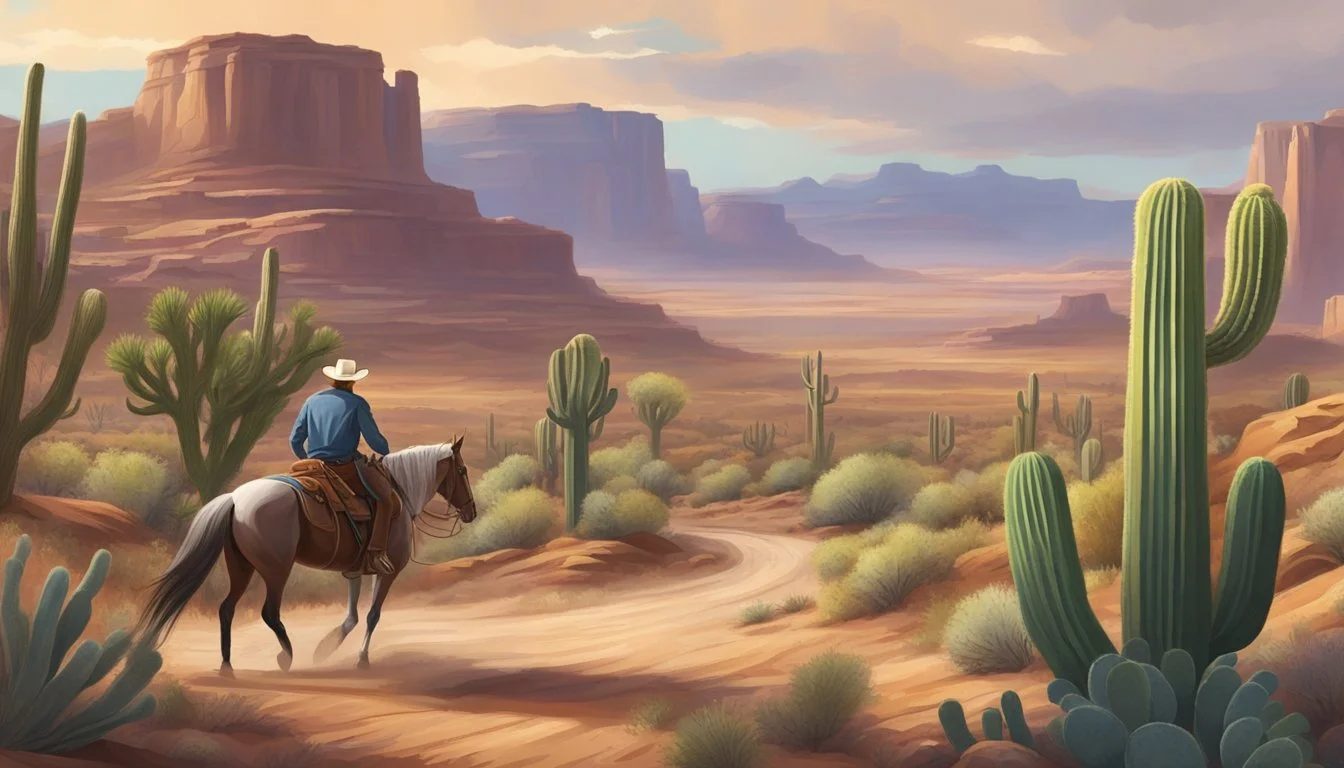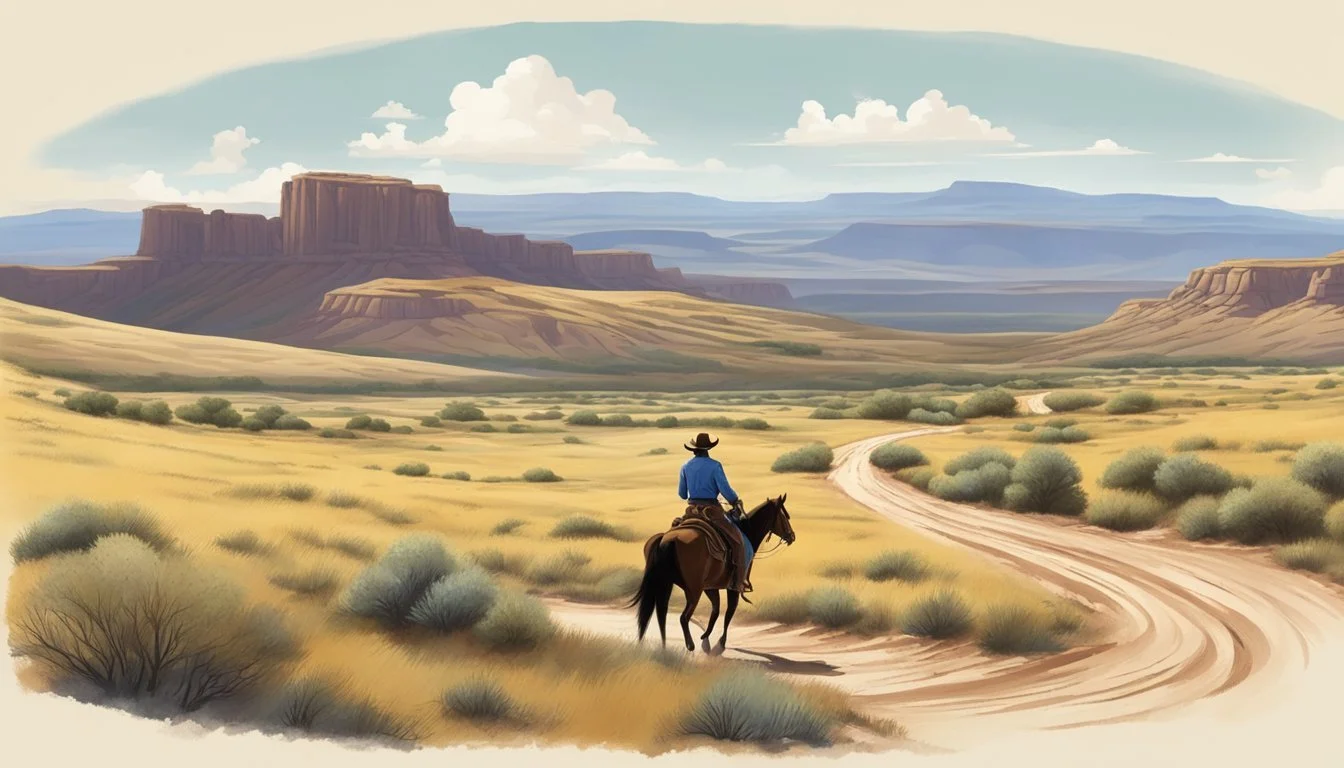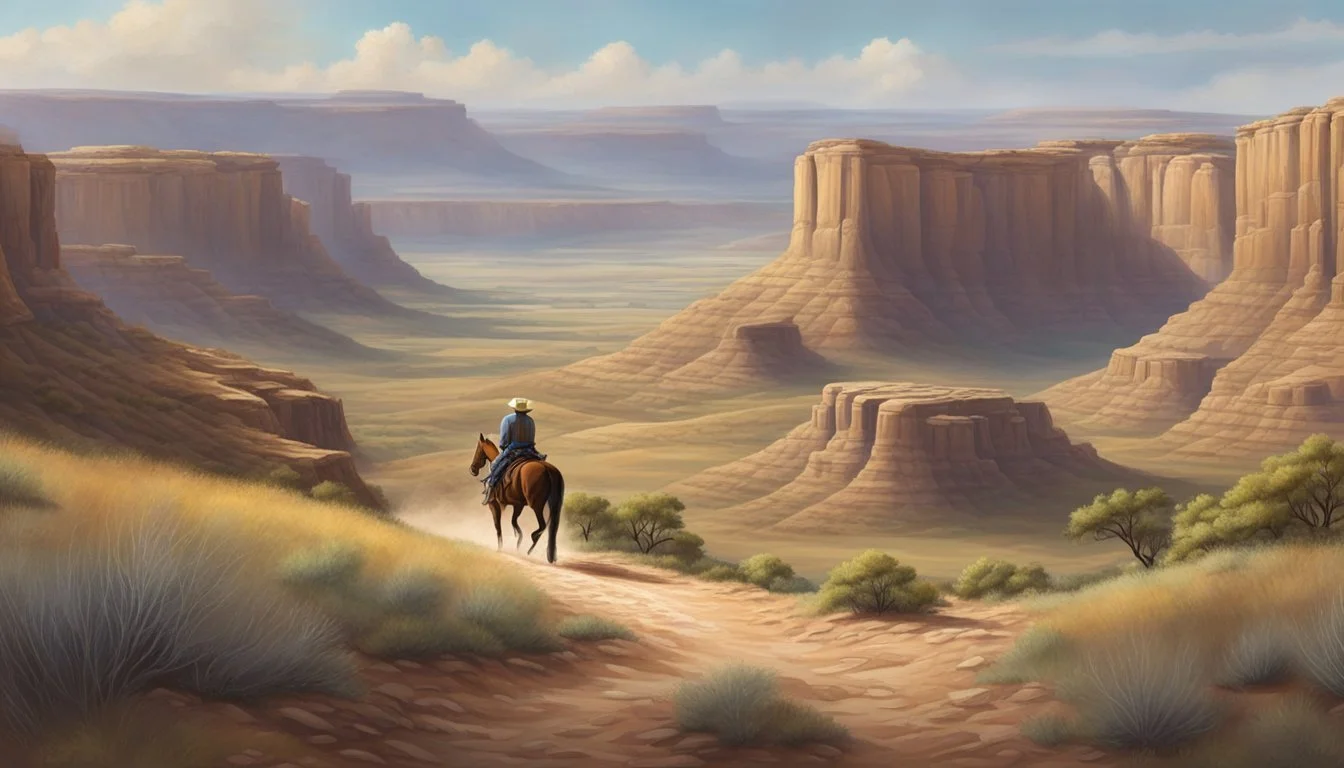The Texas Cowboy's Guide to the Best Horse Riding Trails
Unbridled Adventure Awaits
In the vast landscape of Texas, where the cowboy culture is as enduring as the state's own history, horse riding trails weave through the terrain offering adventurers a taste of the Western way of life. These trails promise more than just a ride; they offer a journey through time, environmental diversity, and the heart of Texas tradition. Cowboys and enthusiasts alike are drawn to the unique blend of natural beauty and the rugged spirit of the West that these pathways provide.
The best horse riding experiences in Texas cater to a variety of skill levels, ensuring that every rider, from the novice to the seasoned cowboy, can find a trail to suit their preferences. Whether it is following the historic paths once traveled by cattle herds along the Chisholm Trail, exploring the scenic landscapes of the Davis Mountains State Park with its 7 miles of trails, or taking in the panoramic views at Big Bend Ranch State Park, each trail delivers its own blend of challenge and serenity.
Embarking on these equestrian adventures presents an opportunity not only to connect with the state’s cowboy heritage but also to engage with the land in a deeply personal way. Riders can traverse the picturesque Caprock Canyons State Park Trailway, admiring the canyons and local wildlife over more than 60 miles of trails, or opt for a peaceful ride on the beach, creating lasting memories amidst the Gulf breeze. Texas horseback trails are gateways to both adventure and tranquility, embodying the enduring spirit of the Western lifestyle.
History of the Texas Cowboy
The essence of the Texas cowboy symbolizes the state's rich heritage, arising from Spanish roots and maturing into an integral aspect of the American West. This history intertwines cowboy culture with pivotal events like the civil war and phenomena such as cattle drives, exemplifying the resilience and skill inherent to these rugged individuals.
Evolution of Cowboy Culture
The foundation of cowboy culture in Texas can be traced back to Spanish colonial times, where vaqueros—the predecessors to the American cowboy—exhibited remarkable expertise in cattle herding and proficient horsemanship. Post-Civil War expansion and the demand for beef in the North necessitated the gathering of vast numbers of cattle, which were often wild or feral, leading to the development of adept roping techniques and the characteristic cowboy hat as essential for protection against the elements. The cultural tapestry of the Texas cowboy is a blend of Spanish, Mexican, and American influences, resulting in a distinct identity recognized worldwide.
The Chisholm Trail and Cattle Drives
Cattle drives became a cornerstone of cowboy culture, with the Chisholm Trail standing out as one of the most legendary routes used—stretching from Texas to Kansas. Following the Civil War, from 1867 to 1884, cowboys drove millions of cattle over this trail. The perilous journey for these countless drives required traversing rivers, combating stampedes, and deterring cattle rustlers. This era solidified the rugged image of the cowboy and emphasized the necessity for communal reliance among cowboys.
Influence of Vaqueros and American West
The vaqueros greatly influenced the emergence of the cowboy within the American West. They brought skills and traditions that became the foundation of cowboy practices, including the use of the lasso for roping cattle, and methods for training horses. The attire that has become synonymous with cowboys, such as cowboy hats and boots, along with ranching customs, derived from these early horsemen. As territories like Texas joined the Union, the cowboy became the icon of the expansive West, capturing the world's imagination and shaping the frontier's legacy.
Essentials of Cowboy Gear
Before a cowboy can hit the trails, certain gear is fundamental for both safety and tradition. These essentials range from protective wear to functional tools that have stood the test of time.
The Iconic Cowboy Hat
The cowboy hat is not only a symbol of the cowboy ethos but also serves a practical purpose. Wide-brimmed hats made of felt or straw protect a rider's face from sun, wind, and rain. The unique design with a creased crown facilitates airflow, making it ideal for long hours under the harsh Texas sun.
Boots and Chaps
Boots and chaps form the critical second line of defense and comfort for a cowboy.
Boots: Durable leather boots, often with a high top, protect the rider's feet and ankles from stirrups and the elements. Their underslung heels prevent the foot from sliding through the stirrup, which can be dangerous during a fall.
Chaps: Shotgun chaps, snug around the leg, provide protection against brush, animal encounters, and general wear and tear on the trail.
Saddles and Ropes
A trail ride is incomplete without the appropriate saddle and ropes.
Saddles: The well-crafted saddle serves as a cowboy's seat and control center. It provides comfort for both horse and rider over long distances and has a horn for attaching ropes or lassos.
Ropes: A good quality rope, such as the roper, is a versatile tool essential for cattle work, securing the horse, and in some cases, emergency repairs.
Popular Horse Trails in Texas
Texas offers an abundance of trails that are perfect for horseback riding enthusiasts looking to capture the essence of the traditional cowboy experience. From the historical pathways of Fort Worth to the rugged beauty of the Palo Duro Canyon, riders can explore diverse landscapes.
Fort Worth Trails
In Fort Worth, often referred to as the 'City of Cowboys and Culture', the equestrian scene thrives with numerous trails that offer a glimpse of Texas' ranching heritage. She can explore the Chisholm Trail where cowhands once drove cattle to market, or he might prefer the scenic rides along the shores of Lake Benbrook. Fort Worth serves as a nexus point that connects the modern city life with the untamed narrative of the Old West.
Bandera: The Cowboy Capital
Bandera, proudly known as the 'Cowboy Capital of the World', lies southwest of Austin and north of San Antonio. This small town is surrounded by sprawling ranches where one can saddle up and traverse the same landscapes that cowboys did over a century ago. They can ride across the Hill Country State Natural Area with its clear streams and challenging trails, which are open to both novices and experienced riders.
Trails of the Palo Duro Canyon
Finally, the Palo Duro Canyon, known as the 'Grand Canyon of Texas', offers extraordinary vistas and a multitude of trails suited for equestrian adventurers. It is located in the Texas Panhandle near the cities of Amarillo and Canyon. Riders have the opportunity to trace the steps of the Comanche and experience the canyon's dramatic terrain, where the trails wind through the rugged and colorful badlands.
Ranch Life and Cowboy Responsibilities
In the heart of Texas, ranch life blends tradition with a suite of responsibilities that define the cowboy's daily existence. They uphold the legacy of the Lone Star State through expert horsemanship and an unwavering commitment to their craft.
Daily Duties on a Texas Ranch
Texas ranches operate on a rhythm dictated by the sun and the needs of the livestock. Cowboys begin their day at dawn, with a list of chores that cover a wide range of tasks essential to the well-being of the ranch and its cattle.
Feeding: Ensuring that all animals have access to the proper nutrition, which might include hay, grain, and range cubes.
Health Checks: Examining cattle for signs of sickness or injury.
Maintenance: Repairing fences, gates, and watering troughs to keep the ranch functioning safely and efficiently.
Working Cattle: This includes branding, castrating, and administering vaccinations when necessary.
Cowboy Skills and Horsemanship
At the core of cowboy responsibilities is horsemanship. Texas cowboys are renowned for their ability to handle horses with a mix of respect and skill, which is vital for the various tasks they perform.
Riding: Cowboys spend a significant part of their day on horseback, traversing the vast ranch terrain.
Herding: They are adept at guiding cattle during routine movements or on longer drives, keeping the herd together and moving in the right direction.
Roping: A precise skill used to catch individual animals for various reasons like medical treatment or when segregating them from the herd.
A Texas ranch operates through an intricate balance of daily tasks that maintain both the cowboy way of life and the necessities of livestock management. The responsibilities undertaken by cowboys are crucial to the success and sustainability of ranch operations.
Cultural Experiences and Attractions
Texas offers a rich tapestry of cultural experiences that immerse visitors in the cowboy way of life. From the thrills of rodeos to the storytelling of museums and the hands-on experience at ranches, the state boasts a wealth of attractions that celebrate its Western heritage.
Rodeos and Roundup Activities
Rodeos are a quintessential part of Texas culture, providing an authentic glimpse into the skills and sportsmanship that define the cowboy legacy. The Fort Worth Stockyards, for instance, hosts daily cattle drives and rodeo exhibitions, honoring the traditions of the Chisholm Trail. Visitors can witness the excitement firsthand at events like:
Fort Worth Stockyards Rodeo: Held weekly with traditional events including bull riding, team roping, and barrel racing.
Annual Roundup Competitions: Seasonal events where cowboys showcase their abilities in herding, branding, and other ranching skills.
Museums and Festivals Celebrating Western Heritage
Museums play a crucial role in preserving the artifacts and stories of cowboy history. They organize festivals that encapsulate the spirit of the Old West. Noteworthy institutions and events include:
Pioneer Plaza in Dallas: Home to the largest bronze monument of Texas longhorn steer, symbolizing the historic trails.
West End Entertainment District: Offers a mix of specialty shops and venues with a cowboy flair.
Festival Name Location Highlights Texas Cowboy Reunion Stamford, Texas One of the oldest cowboy festivals, celebrating Western traditions. Bandera Cowboy Capital of the World Bandera, Texas Offers parades, rodeo events, and historical reenactments.
Ranch Stay and Cowboy Tourism
For those seeking an immersive cowboy experience, staying at a dude or guest ranch offers a chance to live the cowboy lifestyle. These ranches provide authentic cowboy tourism, with activities designed to emulate the day-to-day life of a Texas cowboy.
Featured Ranches:
Dixie Dude Ranch: Located in Bandera, also known as the "Cowboy Capital of the World," this ranch offers horseback riding, cattle drives, and campfire storytelling.
Guest Ranches Experiences: Many ranches let guests participate in roping, riding, and other ranch operations.
These destinations and activities serve as the living heart of cowboy culture in Texas, inviting visitors to step into the boots of a true cowboy.
Outdoor Adventures Beyond Riding
Beyond the saddle, Texas offers a vast array of outdoor activities that capture the spirit of the adventurous cowboy. The landscape is ripe for exploration, offering everything from serene camping spots to rich wildlife habitats ideal for fishing and bird watching.
Camping Options in Cowboy Country
In cowboy country, campers can find both luxury and primitive camping opportunities. The Dixie Dude Ranch, for example, not only offers horseback riding but also provides guests with the option to stay overnight at their facilities, which include comfortable lodging and even a swimming pool for a relaxing dip. For those preferring a more rugged experience, Big Bend Ranch State Park offers primitive camping spots amidst the stunning Texan scenery, though one should always be cautious and respectful of the land, considering factors like barbed wire which can be found on private properties.
Fishing and Wildlife Watching
The lands around Amarillo and beyond serve as excellent sites for fishing and wildlife watching. Whether casting a line in search of bass in the quiet ponds of ranches or observing the local fauna in their natural habitats, nature enthusiasts will find plenty of opportunities to engage with the outdoors. Remember to follow local regulations to preserve both the environment and the rich biodiversity of Texas.
Hiking Trails and Nature Exploration
For the hikers, Texas boasts an extensive network of trails ranging from easy walks to challenging treks. Nature explorers can traverse the rolling hills and discover hidden canyons, each presenting a unique view of the Texan wilds. Areas like Palo Duro Canyon State Park near Amarillo invite adventurers to tread pathways where one can delve into the flora, fauna, and geological history that make the region so special.
Cowboy Lifestyle Today
The landscape of cowboy life in Texas has adapted to modern times, but the core values of resilience and independence remain deeply ingrained in the culture.
Modern Cowboys and Ranch Management
Today's cowboys combine traditional ranching know-how with contemporary agricultural practices. They are more likely to utilize technology such as GPS for tracking herds or drones for monitoring their vast properties. King Ranch in Texas, one of the largest ranches in the world, exemplifies modern ranch management while maintaining the heritage of the Lone Star State's cowboy culture. With foundations in the 19th century, it now covers 825,000 acres and stands as a testament to the adaptability and continuity of cowboy traditions.
Technological Tools in Use:
GPS herd tracking
Drone surveillance
Livestock management software
Cowboy Ethics: Resilience and Independence
The character of a cowboy is marked by resilience, a quality that allows them to persevere in the face of hard work and challenges. Independence is another hallmark, with cowboys and cowgirls making decisions and performing their tasks guided by a strong sense of personal responsibility. Rodeos continue to showcase these attributes, with participants competing in events that test their skills and courage.
Core Values:
Resilience: Overcoming environmental and economic challenges
Independence: Self-reliance in daily tasks and decision-making
Courage: Facing the dangers of rodeo competitions and ranch work
In the domain of rodeos, cowgirls play a significant role, demonstrating that the essence of cowboy culture transcends gender, embracing anyone with the grit and skill to participate in this demanding lifestyle.
Tips for Travelers
Exploring the trails of Texas by horseback is an exhilarating adventure, capturing the essence of the Wild West. Proper planning and packing are crucial for a comfortable and authentic cowboy trail experience.
Planning Your Cowboy Trail Adventure
When arranging your horse riding adventure in Texas, consider booking with a guide especially if you're a beginner or unfamiliar with the region. A guided tour ensures safety and provides historical insights, enhancing the experience. For an immersive journey, opt for a small group format to keep the experience intimate and personalized. Texans take pride in their history, so saddle up and prepare to live out your cowboy or cowgirl dreams.
Travelers should plan their trip itinerary with stops for dining at local establishments and shopping for souvenirs that symbolize the Texan spirit. If possible, include a night under the stars to enjoy a traditional campfire, swapping stories or perhaps meeting a modern-day cowboy hero.
What to Pack for the Trip
When packing for your trail ride, the following items are essential:
Clothing: Durable jeans, comfortable long-sleeve shirts, and a wide-brimmed hat for sun protection.
Footwear: Sturdy boots that fit well in stirrups.
Gear: Riding gloves, sunglasses, and a high-SPF sunscreen.
Item Category Specific Items Purpose Gear Saddlebags To store personal items and packed lunches. Clothing Bandana Multipurpose accessory for protection or cleanup. Hydration Water Bottle To stay hydrated on the trail.
Do not underestimate the importance of packing light, as excessive weight can tire the horse and make the journey less enjoyable. Always consider the horse's comfort and the duration of your adventure when choosing what to take.






